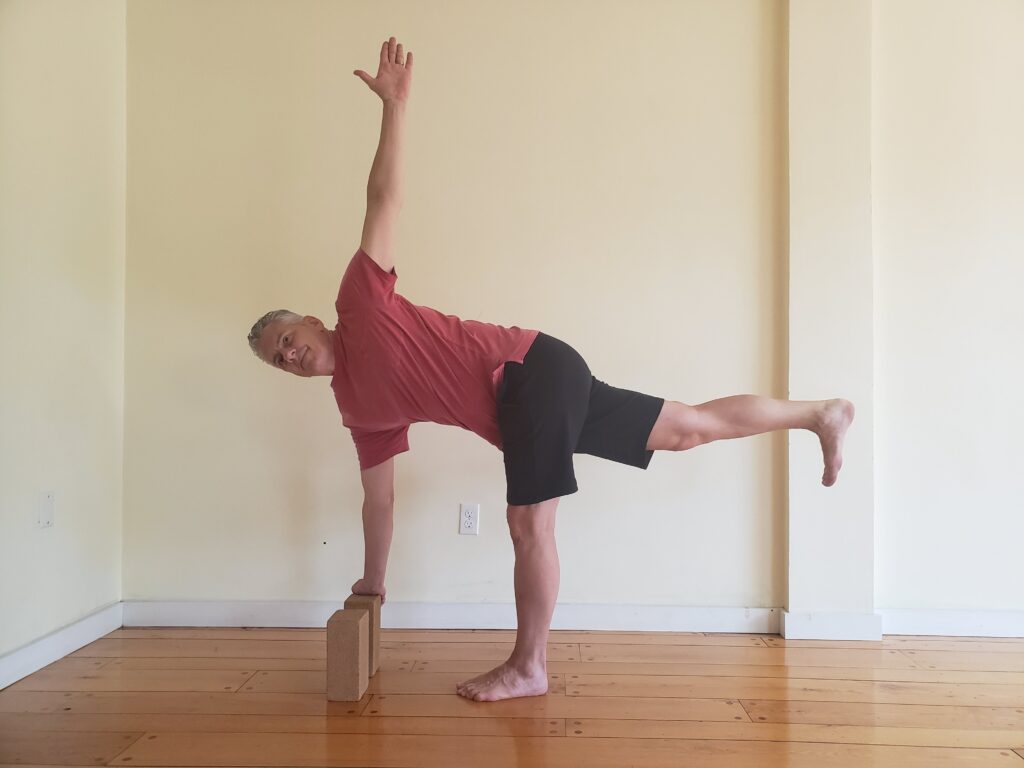Anantasana (Vishnu’s Couch Pose)


I love a good balancing pose, and I’m not just talking about balancing while standing on one leg. Or doing an arm balance. There are lots of ways to balance, and while at first glance Anantasana (Vishnu’s Couch Pose) may not look like much of a balancing pose, just try it for yourself and discover how remaining balanced even while maintaining lots of contact with the floor may challenge you more than you think!
The Legend
First a little background. Lord Vishnu, one of the principal deities of Hinduism, is known as the supreme being who creates, protects, and transforms the universe. In Hindu mythology, Ananta was the name of a 1,000-headed serpent who served as Vishnu’s support (or couch) while the deity reclined during his time in the primordial ocean between incarnations. The pose is named after the serpent (Ananta + asana) rather than Vishnu, but it is Vishnu whom we remember.
Benefits
Anantasana is thought to relieve stress, fatigue, and depression. As such, it is a grounding pose and can foster a sense of calmness, stability, and security. It is also a moderate hamstring stretch and requires engagement of the abdominal muscles to prevent rolling out of the pose.
Getting started
Lie face-down on the floor, then roll onto your right side.
Stack your left leg on top of your right, flex your feet, and extend your right arm overhead on the floor. Rest your head on your right bicep.
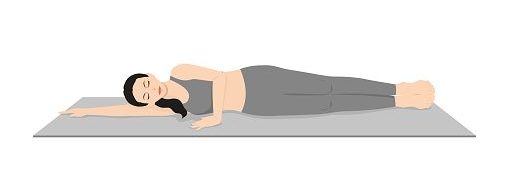
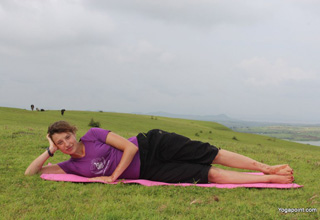
Lift your head and bend your right elbow, resting your head on your right hand. If you’re like me, this reminds me of my childhood — lying on the living room floor watching TV.
Place your left hand on the floor in front of your torso and imagine that you’re lying on a single floorboard so that your right arm, the right side of your torso, your right hip and leg are all aligned to that single floorboard. Your body may want to bend at the hips or waist (“jackknife”), putting your legs and torso at angles to each other rather than aligning in a straight line, but resist this urge. At this point you may begin to feel some wobbliness, which is completely normal.
Draw the sole of your left foot up the inseam of your right leg, pointing your left knee toward the ceiling. This opens the left hip and looks a little like you’re doing a side-lying version of Vrksasana (Tree Pose). Keep your hand on the floor in front of your torso and your right foot flexed for greater stability.

If you’re new to Anantasana, or if you’re feeling a bit wobbly, you might stay with this aspect of the pose until you feel ready to move on at a later time.
Going Deeper

To challenge yourself a bit more, lift your left foot off your right inseam, bringing your left knee closer to your left shoulder.
Extend your left leg into the air. You can either extend your leg unaided by your left hand or you could place your left hand on the back of your leg. The traditional approach is to take your left big toe into your left hand while your knee is bent and maintain that connection as you straighten your left leg.
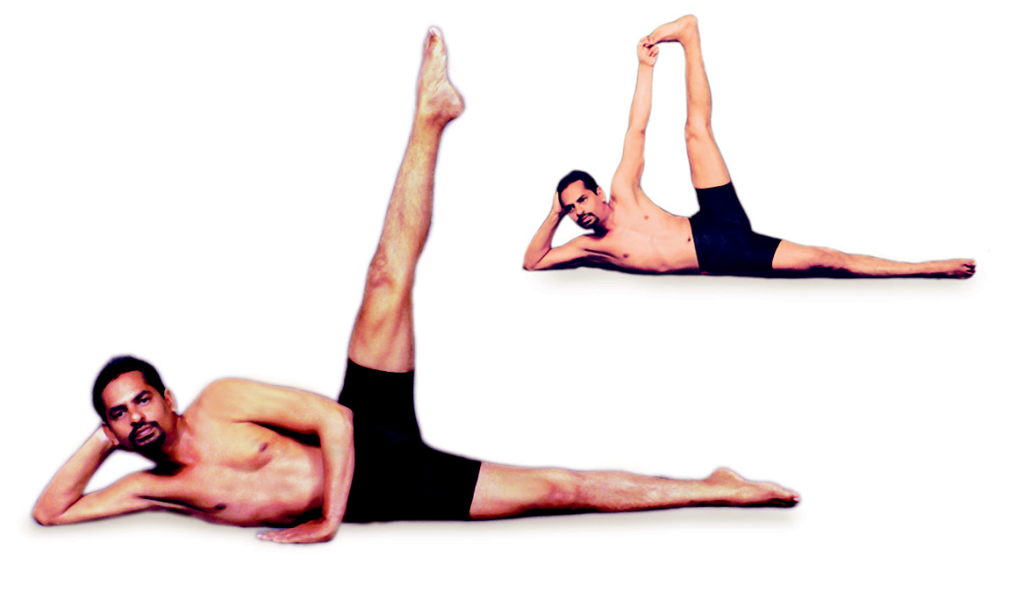

Extending the leg in this way creates more of a challenge for your balance, and you may find yourself rolling onto your right butt cheek or completely falling out of the pose! Don’t worry; you don’t have far to go. If you roll onto your back, just start over again.
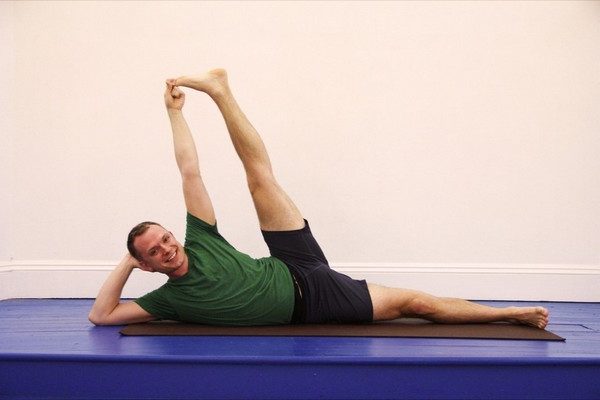
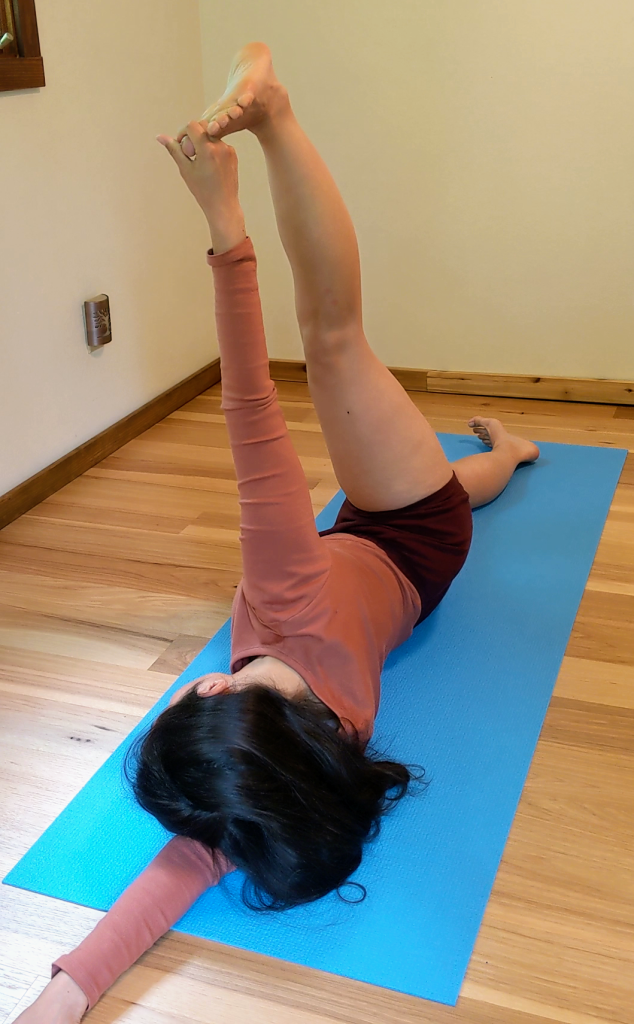
If you make it into the raised-leg aspect of the pose, check that you’re not “jackknifing”. You want to maintain that straight line from elbow to heel.
Keep breathing and hold the pose for 30 seconds or more before releasing out of the pose and returning to lying face-down on the floor. Rest for a moment, then repeat on the left side.
Ways to prop
Many of us find it difficult to hold onto the big toe and extend the leg toward the ceiling. You always have the option of just raising the leg or placing your hand behind your thigh. However, if you like the contact between your hand and your big toe but can’t fully extend the leg, you’re not alone. Here’s a way to maintain the connection AND extend your leg.
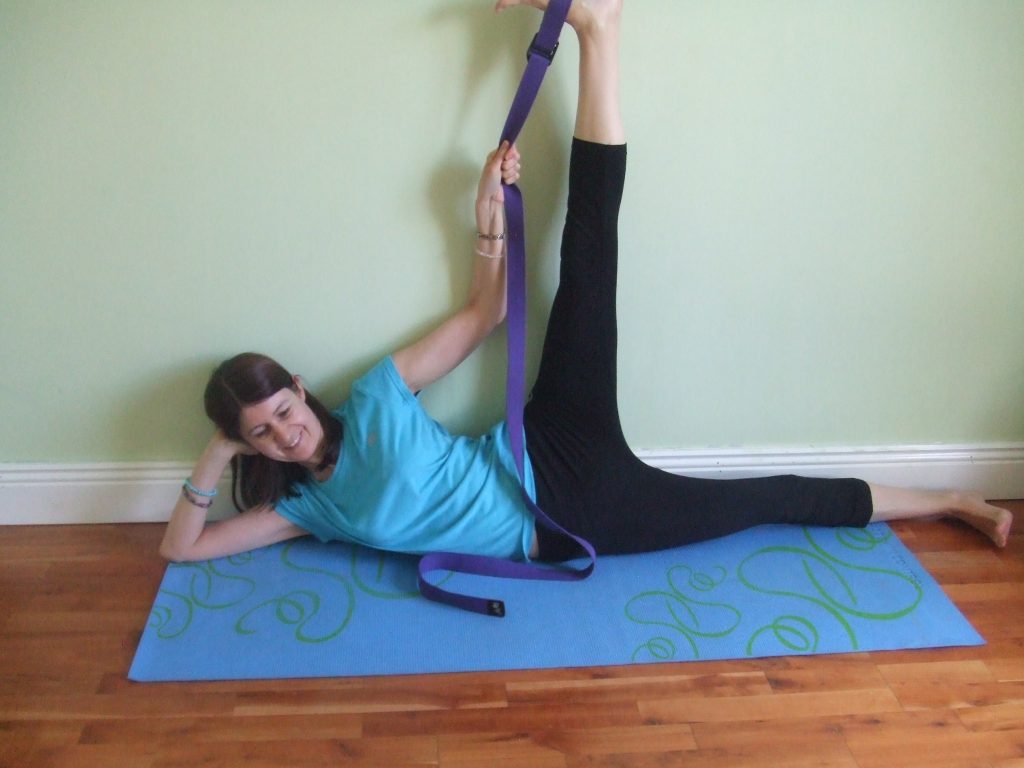
Loop a belt around your foot and hold the belt in your hand as you slowly extend your leg upward. It’s a great way to have a little extra support.
If you really are having difficulty maintaining your balance, try doing Anantasana with your back against a wall. It will definitely give you greater support, but don’t expect it to necessarily be easier. It can still be a challenge!
One last image…
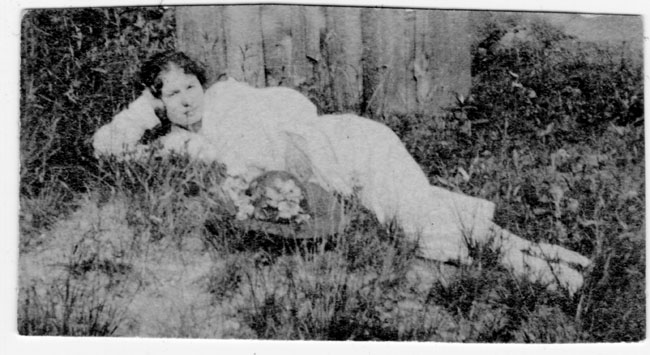
This is a picture of my grandmother as a teenager, ca. 1910-1915. While she’s obviously not doing yoga, it’s always reminded me of Anantasana, and I get a kick out of seeing this person I knew only as an old woman lounging around as a young woman in a position that looks so much like one of my favorite yoga poses.
You’re welcome!
Lindel Hart teaches yoga online for PerfectFit Wellness. He lives in Western Massachusetts and teaches at Deerfield Academy, a private residential high school, as well as at Community Yoga and Wellness in Greenfield, MA. Visit his website, Hart Yoga.


